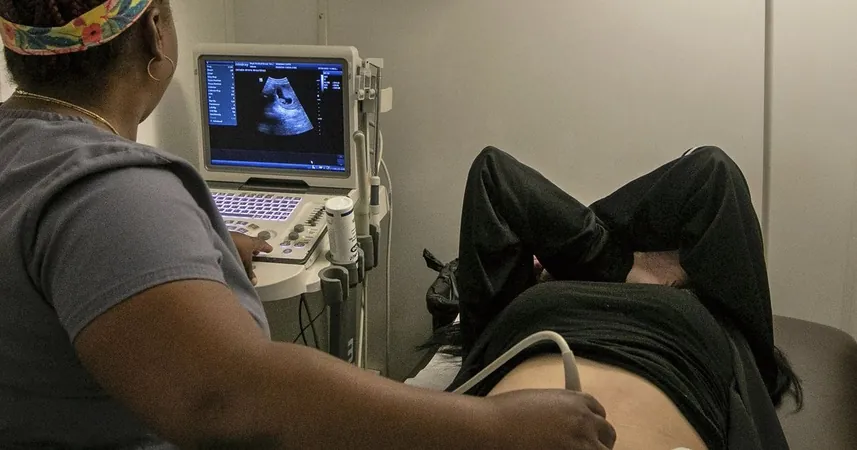
Revolutionary Ultrasound Test Detects 96% of Ovarian Cancer Cases: A Game Changer for Women's Health!
2024-10-03
Groundbreaking Study on Ovarian Cancer Detection
LONDON — A groundbreaking study has revealed that a cutting-edge ultrasound test can accurately detect an impressive 96% of ovarian cancer cases in postmenopausal women. This significant advancement suggests that the current standard diagnostic methods could soon be outdated, as experts advocate for the implementation of this more reliable test.
Comparison of Diagnostic Tests
Researchers conducted a comprehensive comparison of six diagnostic tests for ovarian cancer and concluded that one, specifically the IOTA ADNEX model, stands out due to its unparalleled sensitivity. By analyzing the ultrasound appearance of ovarian lumps, this test not only surpasses the previous standard of care in the U.K. but does so with extraordinary precision, identifying a far greater percentage of cases.
Current Standards and Expert Opinions
The current standard test, known as the Risk of Malignancy Index (RMI1), is capable of detecting only 83% of ovarian cancers. Given the IOTA ADNEX model’s capacity to capture a higher percentage of cases, experts, such as Professor Sudha Sundar from the University of Birmingham, argue it should replace RMI1.
Concerns About Increased Accuracy
Importantly, while the increased accuracy may lead to some benign cases flagged as higher risk, the consensus among experts is that the overall benefit of identifying more cancerous cases outweighs this concern. “This is the first time that a head-to-head study of all available ovarian cancer tests has been done in the same population,” Sundar elaborated. “Our findings indicate that the IOTA ADNEX ultrasound protocol’s sensitivity is a significant step forward in early detection.”
Implications of Early Diagnosis
The implications of early diagnosis cannot be understated. According to Annwen Jones, chief executive at Target Ovarian Cancer, timely identification of the disease enhances treatment efficacy and improves patient outcomes. "The earlier ovarian cancer is diagnosed, the easier it is to treat, and the more successful the results,” she stated, emphasizing the need for heightened awareness of ovarian cancer symptoms which can empower women to seek medical advice promptly.
Research Findings and Next Steps
The research highlights that the remarkable accuracy of the IOTA ADNEX model was achieved when performed by well-trained NHS sonographers under strict quality assurance protocols. These promising results have been published in the esteemed Lancet Oncology journal.
Conclusion: A Pivotal Moment in Women's Health
With this revolutionary test on the horizon, the medical community is urged to ramp up efforts in educating the public about ovarian cancer symptoms and to adopt innovative diagnostic techniques swiftly. This could be a pivotal moment in women's health, potentially saving countless lives through early detection and intervention in ovarian cancer.

 Brasil (PT)
Brasil (PT)
 Canada (EN)
Canada (EN)
 Chile (ES)
Chile (ES)
 España (ES)
España (ES)
 France (FR)
France (FR)
 Hong Kong (EN)
Hong Kong (EN)
 Italia (IT)
Italia (IT)
 日本 (JA)
日本 (JA)
 Magyarország (HU)
Magyarország (HU)
 Norge (NO)
Norge (NO)
 Polska (PL)
Polska (PL)
 Schweiz (DE)
Schweiz (DE)
 Singapore (EN)
Singapore (EN)
 Sverige (SV)
Sverige (SV)
 Suomi (FI)
Suomi (FI)
 Türkiye (TR)
Türkiye (TR)